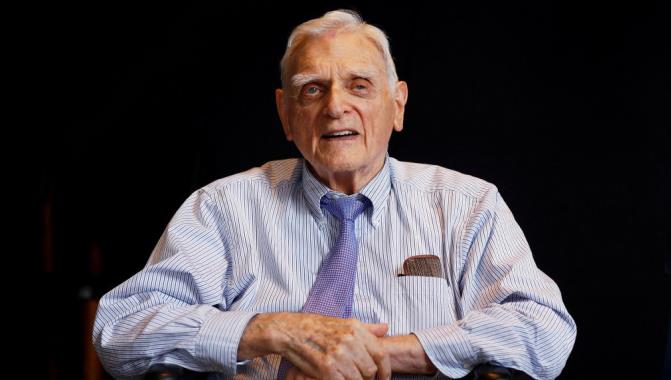People all over the world can not do without lithium-ion Batteries in their daily lives, whether it is mobile phones, tablets, electronic cars, Lithium Ion Batteries are used, which plays an important role in the discovery of Goodenough (John B. Goodenough) died on June 25, at the age of 100.

Mrs. Goodina
▲ Lithium-ion battery development precursor Goodina woman died
The University of Texas at Austin announced the death of John B. Goodenough yesterday (26th). In 1970, Gudina woman developed a new lithium-ion battery chemical equation and proposed the application of cobalt oxide to make electrodes, which greatly improved the power of the battery basin and completely changed the growth bias of lithium-ion batteries.
Do a lot of research on lithium-ion batteries
John Goodina first worked at the Massachusetts Institute of Technology for 24 years, helping to develop computer random access image (RAM). In 1976, Goodina became director of the Inorganic Chemistry Laboratory at the Department of Chemistry at the University of Oxford, during which time he carried out several important studies that were crucial to the opening up of trading lithium-ion batteries. In 1979, Goodina woman and Japanese scholar Shuishima Koichi and others jointly found that the application of lithium cobaltate (LiCoO2) as a lithium-ion battery cathode can make the anode other than lithium metal to conserve energy at a high density, and this discovery improves the development of carbon-based data.
In 1983, Gudina, M. hackeray and others found that manganese spinel is a better positive electrode data, which has high price, stability and excellent conductivity and lithium conduction function, high comprehensive temperature and oxidation is much lower than lithium cobaltate, even if short circuit, overcharge can prevent the danger of burning explosion. In 1989, Gudina and anthiram discovered that higher voltages could be eliminated by taking the positive electrode of a loose electrolyte, such as sulfate, due to its electromagnetic induction effect.
Make modern life more convenient
Lithium-ion batteries are now used in everything from wireless electronics to electric cars to solar panels. Goodina’s name was not well known until 2019, when she shared the Nobel Prize in Chemistry with two other scientists who developed lithium batteries. He was indifferent to the money, and even abandoned most of the patents due to him.
Since 1986, Goodina has been a professor at the University of Texas at Austin, where her research has led to the continuous improvement of battery data and greatly advanced the growth of electric vehicles. Later, at the age of 94, Goodina discovered a fully static battery.
To be the oldest Nobel punisher
In 2019, at the age of 97, Gudina won the Nobel Prize in chemical punishment, which is the oldest recipient of the Nobel Prize in Chemical punishment, Gudina is thought to have made a lot of precursor and pioneering fundamental research for modern lithium-ion batteries, and he finally won the Nobel Prize in Chemical punishment in 2019.
You don’t need a smartphone
Goodina, however, is quite indifferent to fame, and when BBC presenter John Humphrys asked him in 2016 how he felt about how his research had changed the shape of human life, he replied not much: “I’m happy to give something to the world, but I don’t have a mobile phone because I don’t like to be disturbed.”